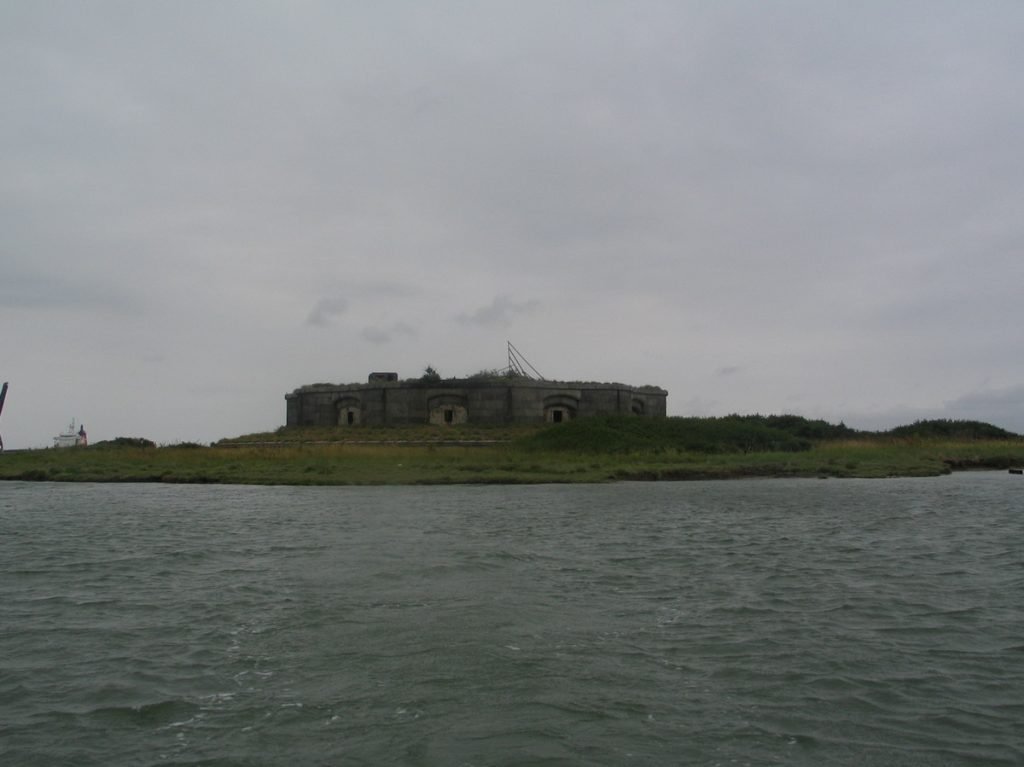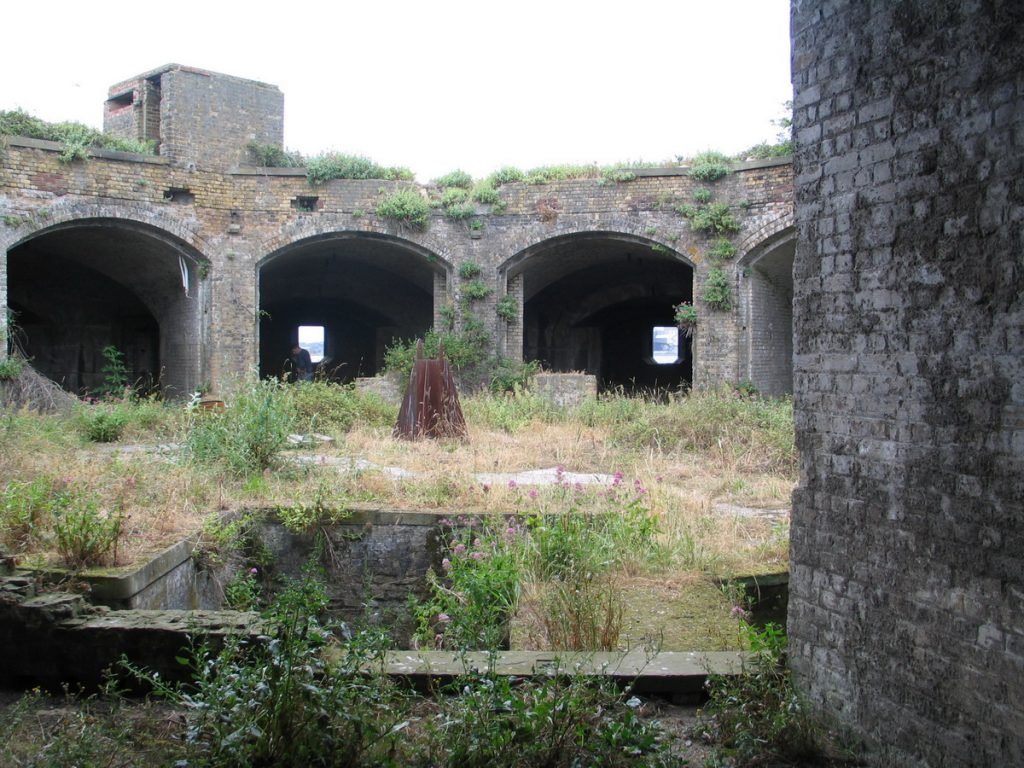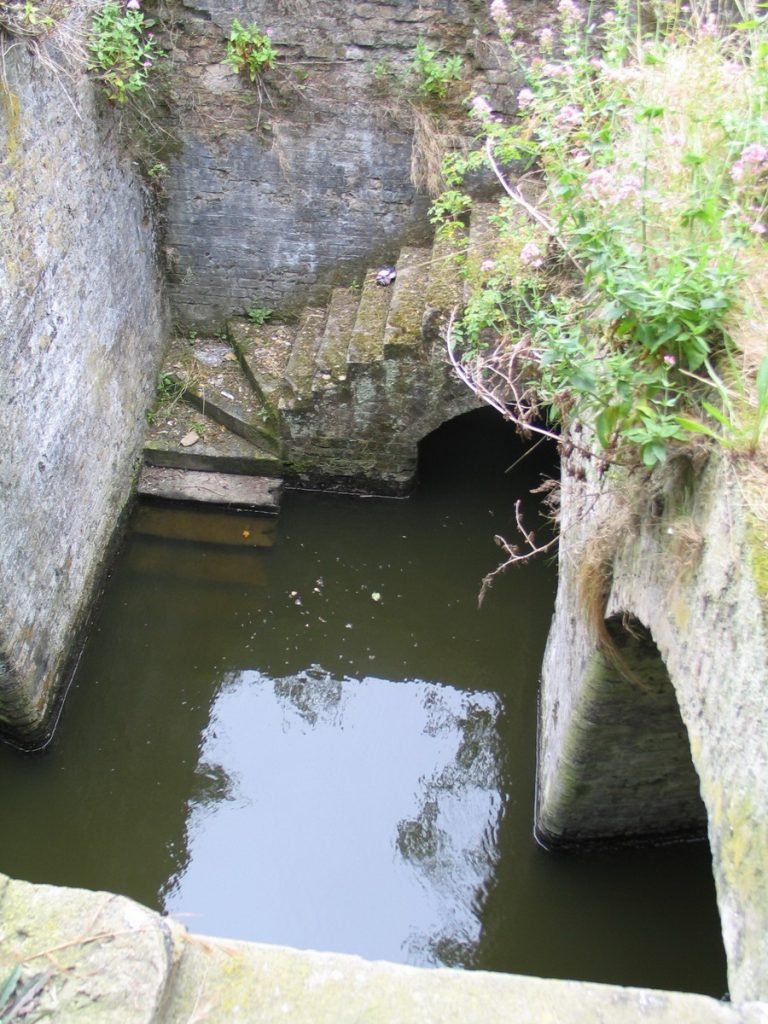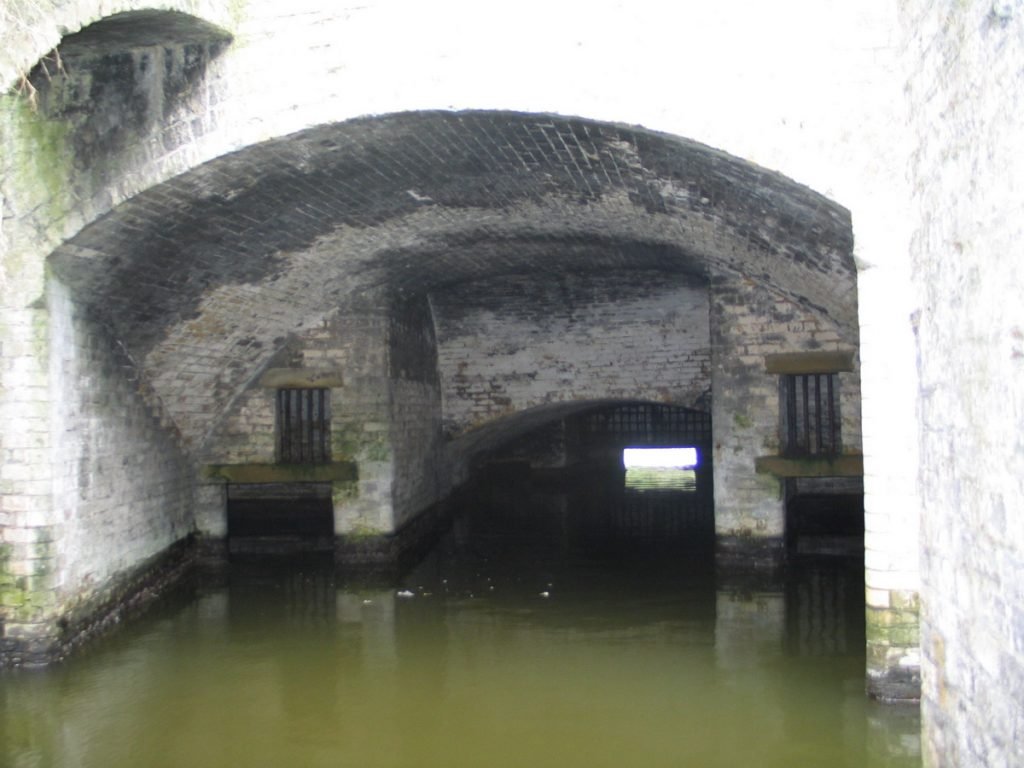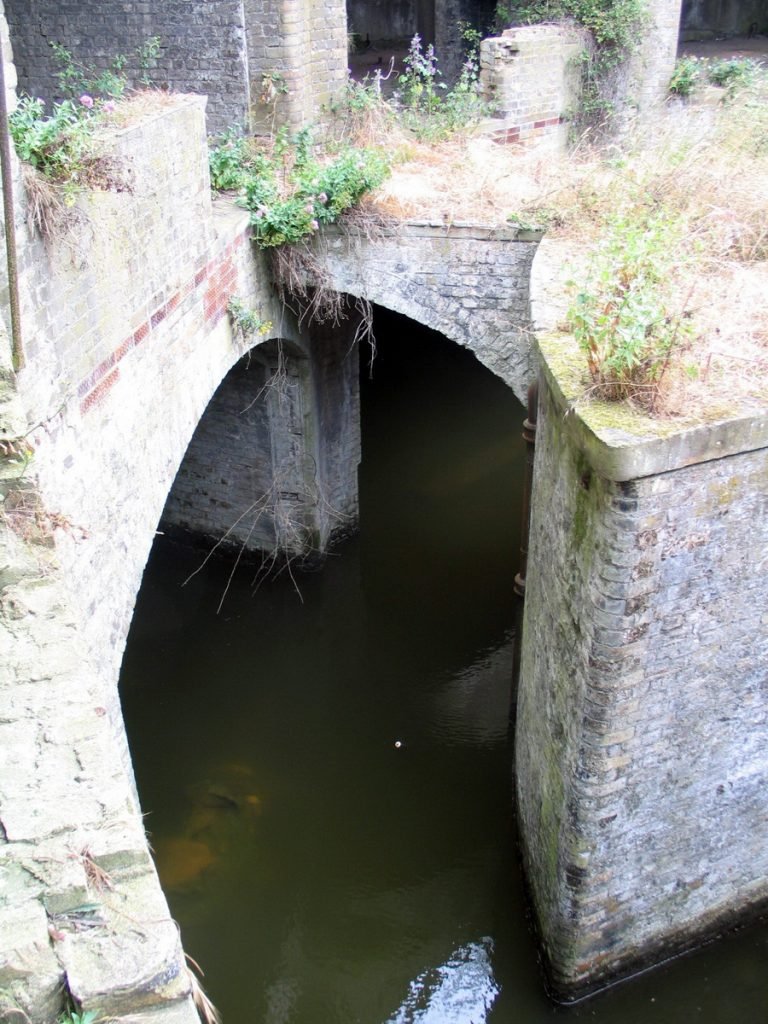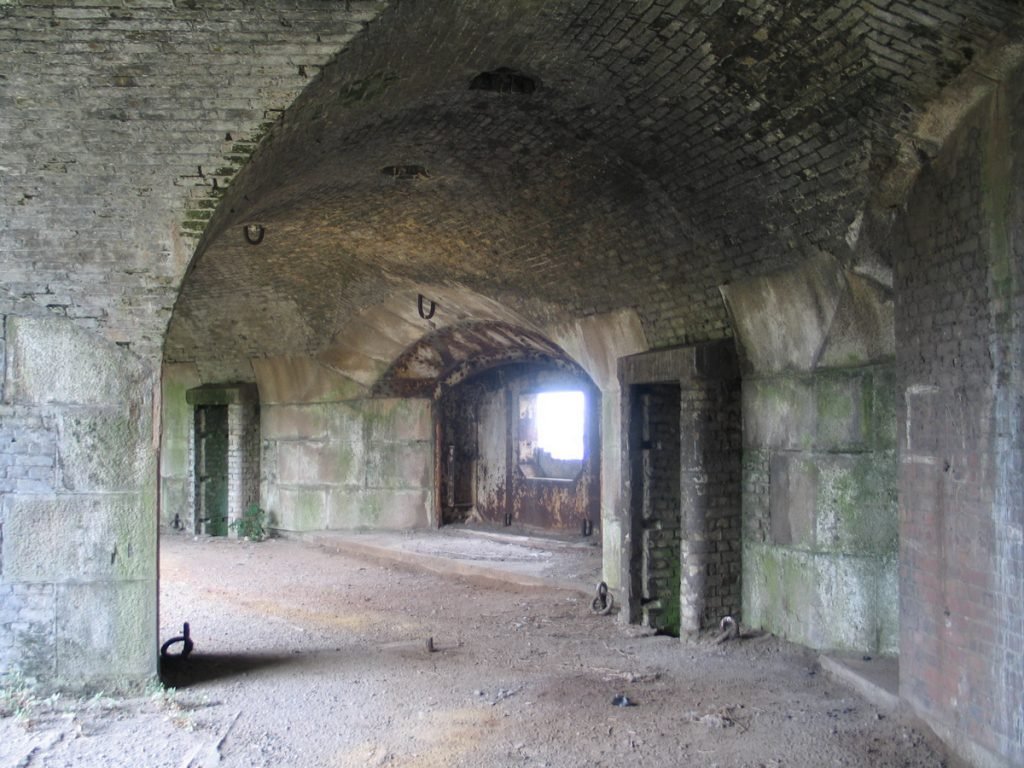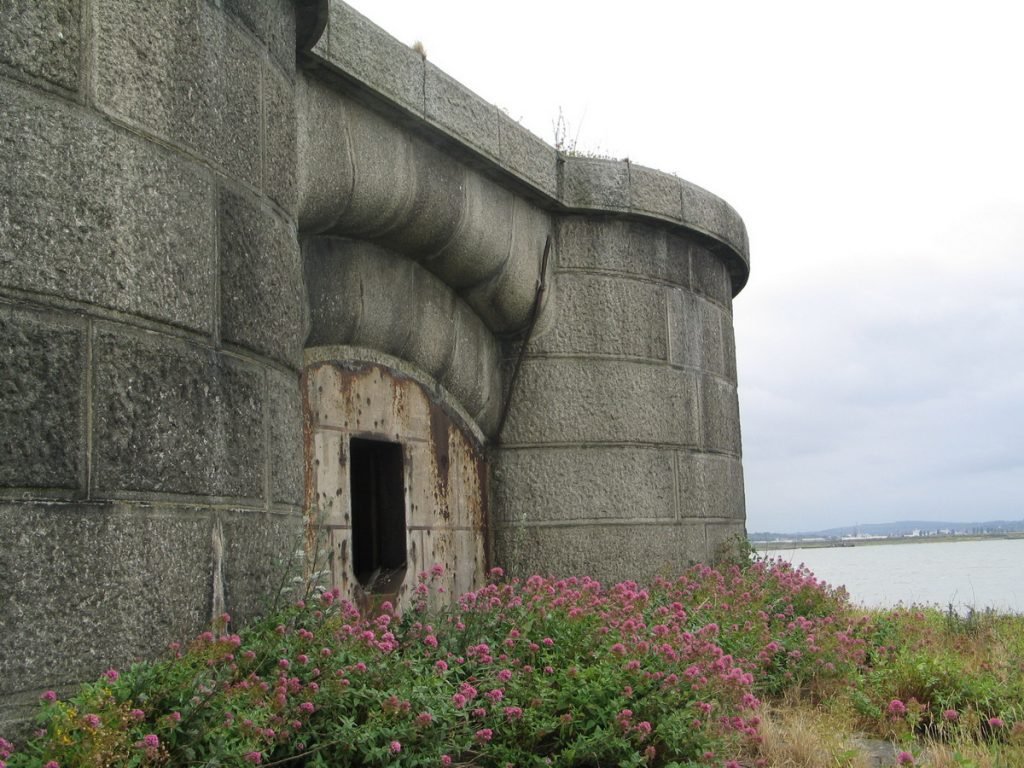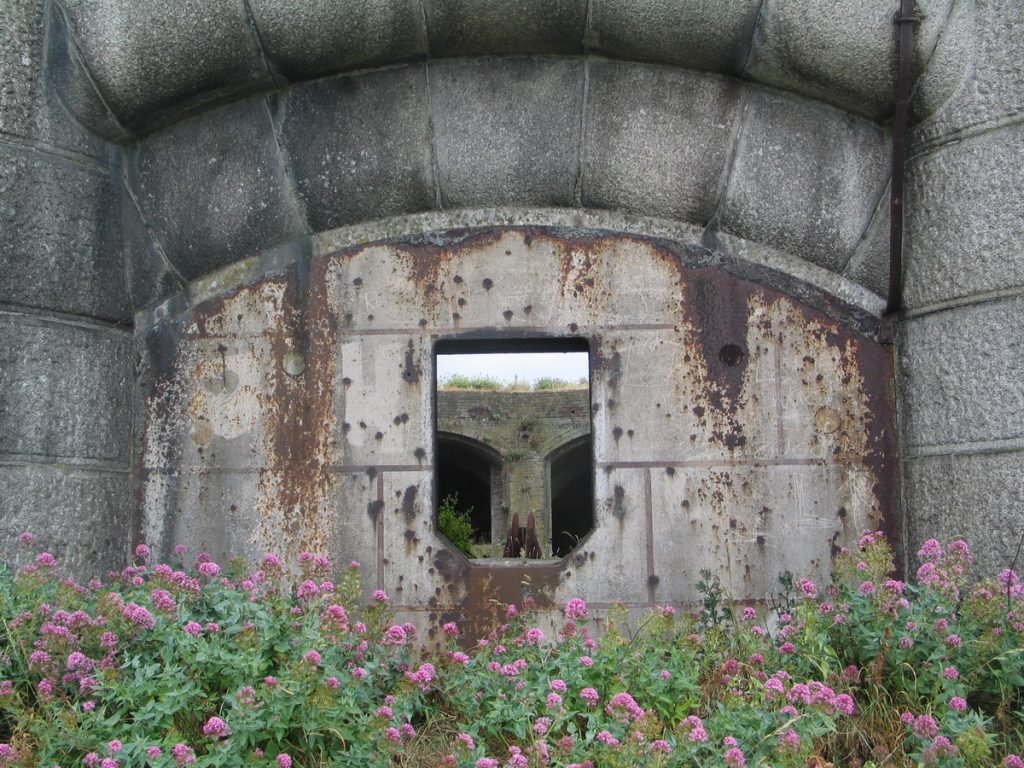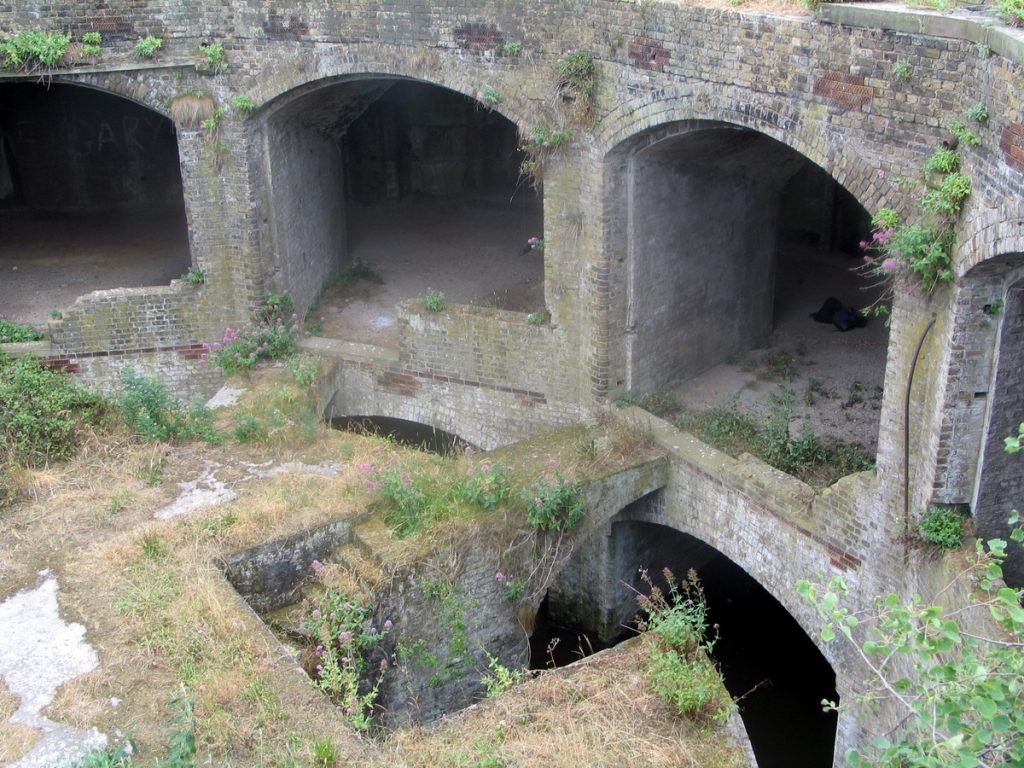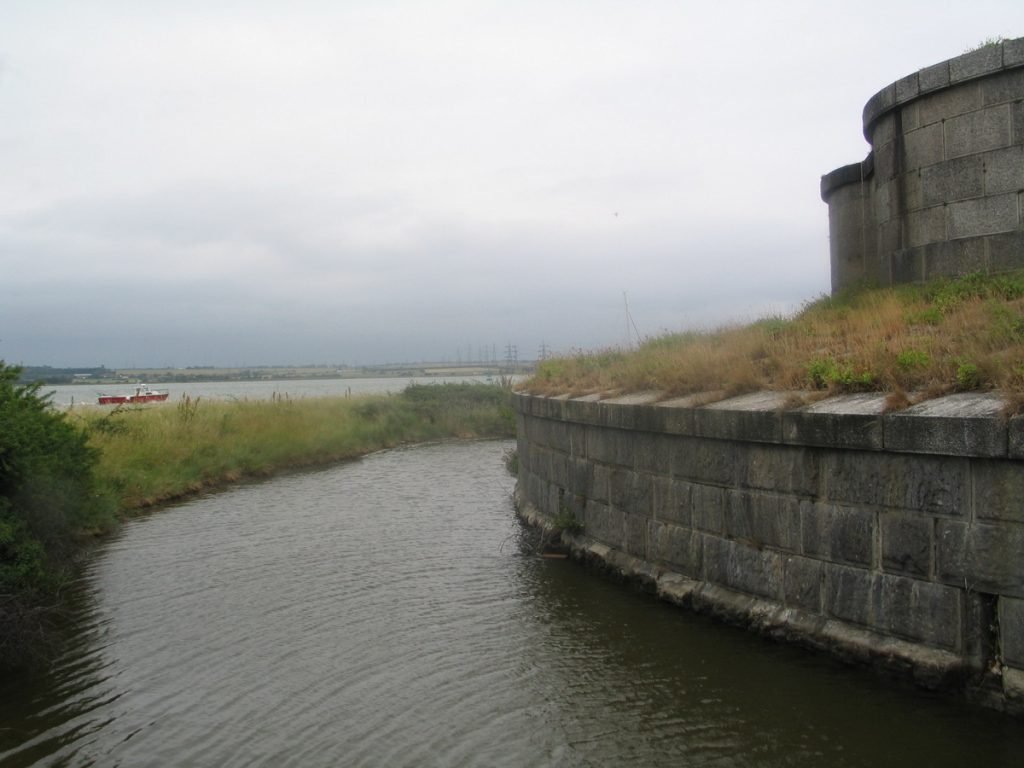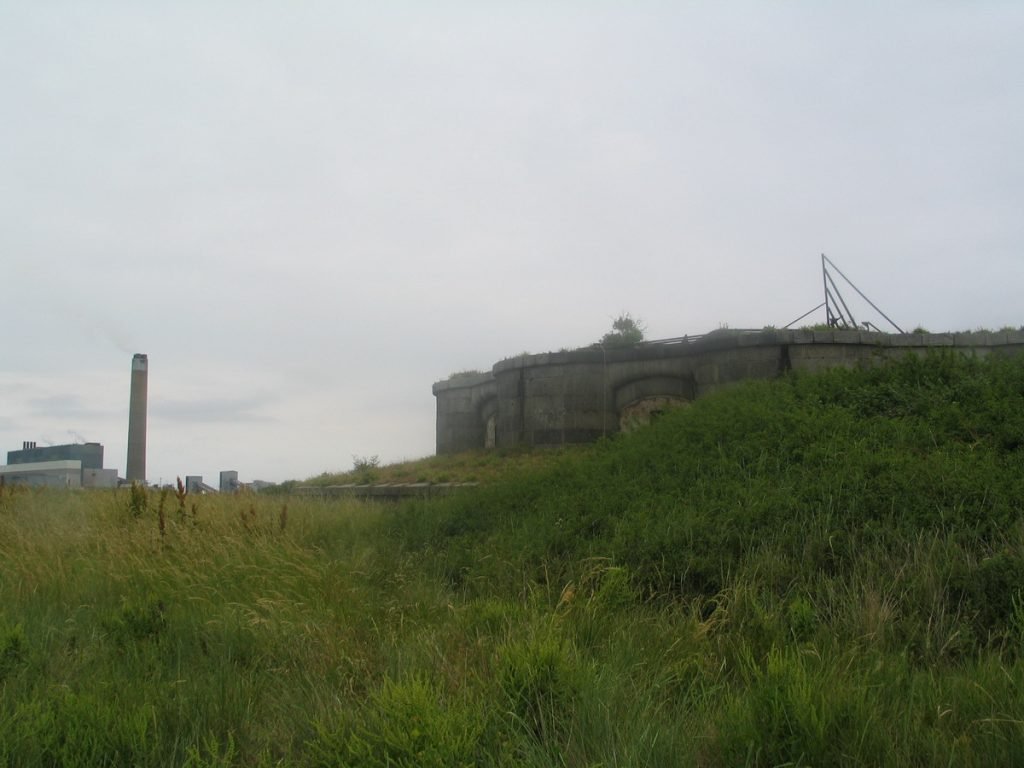Darnet Fort
Construction of Hoo and Darnet Forts was very difficult due to the instability of the ground. The original plans had to be revised, along with the original intended armament for the forts, in order for the building to continue. An upper-tier for each fort was scrapped entirely, and the number of guns was reduced from 25 to 11. As a further supporting measure, thick iron bands were placed around each fort.
Despite the revision of the plans, close monitoring of building progress and extra precautions taken during construction, structural problems continued to be encountered. Fort Darnet was flooded in 1862 after a dam failed, and cracks appeared in both forts. Eventually, each fort was weighted with 3,500 tons of ballast, yet the problems of water seepage continued.
When they were finally completed the two forts were identical; each had an upper level of 11 gun casemates over a lower level containing mess rooms, officer’s quarters, ablutions, cook house and stores. Behind these were the magazines running around the inside perimeter of the entire fort. Each gun had its own magazine; light came from lanterns easily accessible via the lighting or lamp passages. The magazines were connected to the gun casemates by means of separate shell and cartridge lifts for each gun.
Both forts remained manned and gunned right up to and including World War Two, when they saw use as mine observation stations. Both sites have since been sold; Hoo remains in nominal management and ownership of the MOD, and Darnet has been sold privately. They have been given the status of Scheduled Monuments, but this has not prevented them from being damaged by the inevitable vandalism. In more recent times, Darnet has been deliberately and permanently flooded to prevent further damage.
Location: Medway
Condition: Good
Date Of Visit: 25/06/05
